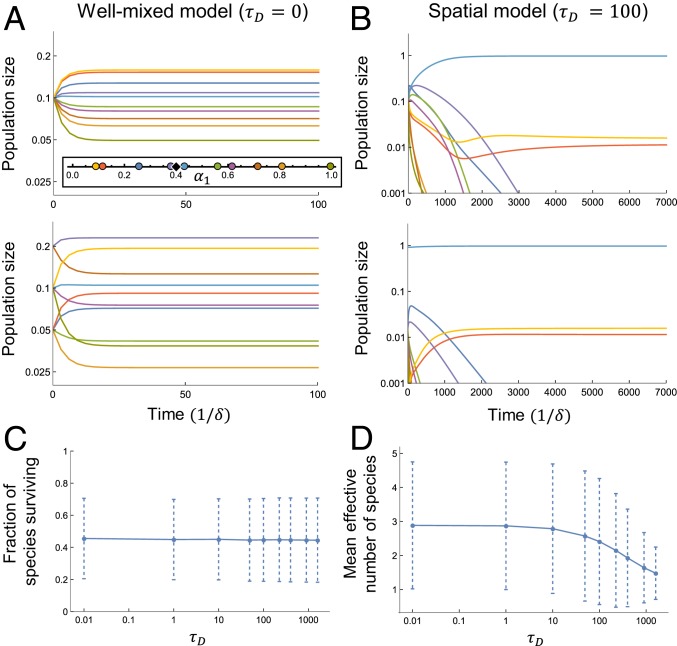Fig. 2.
Spatial structure reduces diversity compared to the well-mixed limit of instantaneous nutrient diffusion. (A, Upper) A well-mixed population of 10 species with equal initial populations competing for 2 nutrients. All 10 coexist at steady state. (A, Lower) Same as A, Upper, but with different initial populations. The community reaches a new steady state. (A, Upper, Inset) Strategies and resource supply . (B, Upper) Same species and nutrient supply as A, but in a spatial environment with nonzero nutrient diffusion time. Only 3 species survive. (B, Lower) Same as B, Upper, but with different initial populations. The community reaches the same steady state. (C) Fraction of initial species coexisting at steady state with ; a population is considered extinct if (mean SD for 400 random sets of 10 strategies). The well-mixed model has survival fraction . (D) Effective number of species at steady state (mean SD for same strategies as C).

